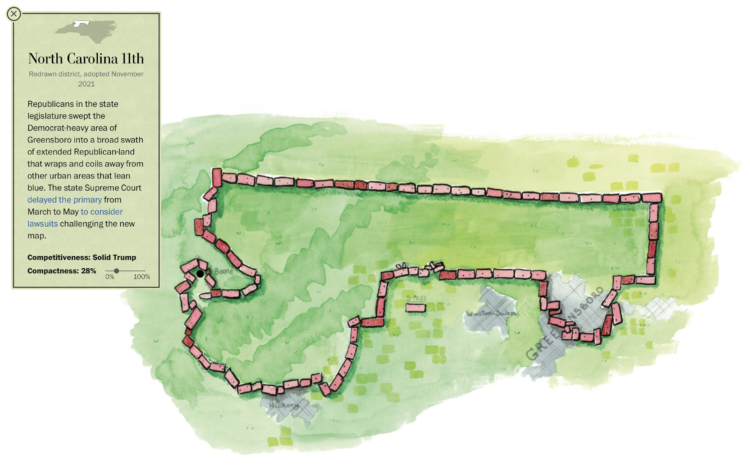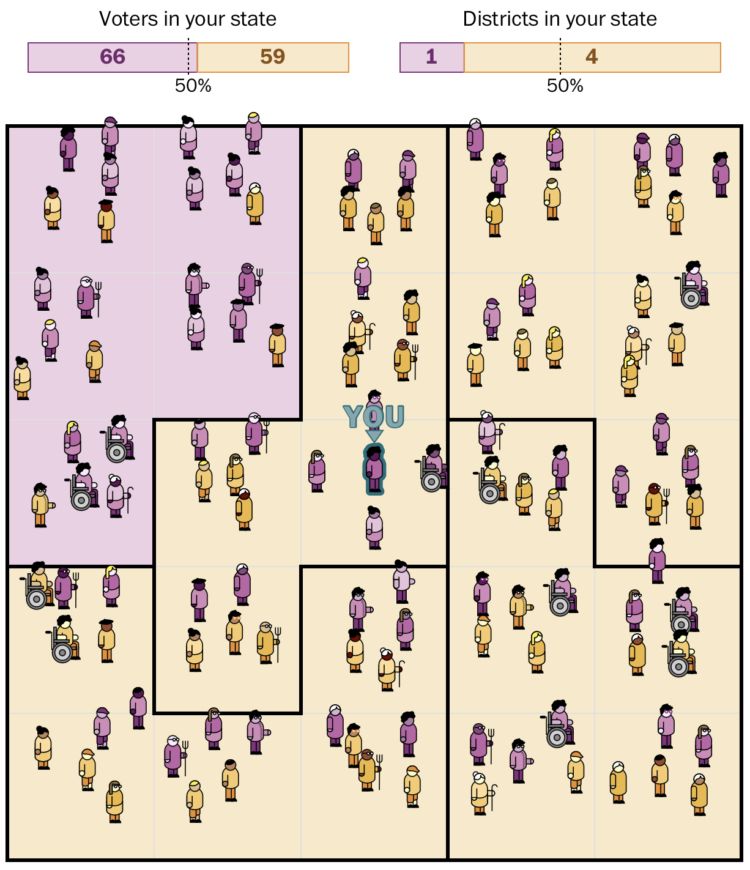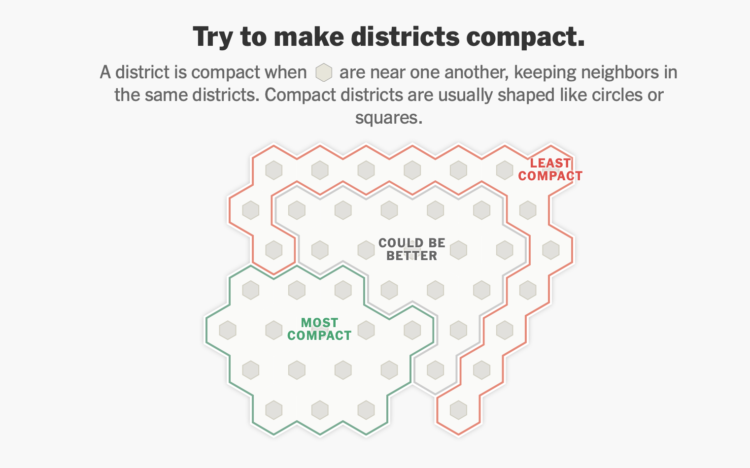
Congressional redistricting and gerrymandering are important topics, because they can directly change election results. However, gerrymandering is called gerrymandering, so it’s too easy to get lost in the details. Well, fret no more. Dylan Moriarty and Joe Fox for The Washington Post made a miniature golf game to teach what’s currently at stake.
It’s a ten-hole course where each putting green is in the shape of a district. The shapes grow more complex as you progress, and the game keeps score for you, so that you can compare your score to par or how other readers performed. It has sound, pretty watercolors, and it’s fun to play.
In the process, the Post tricks you into learning. Win-win.
Tags: game, gerrymandering, golf, redistricting, Washington Post








